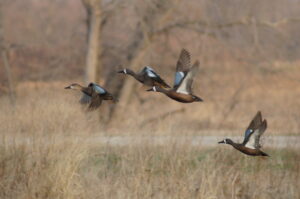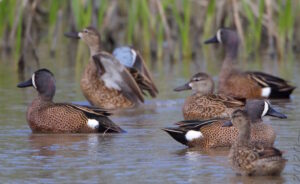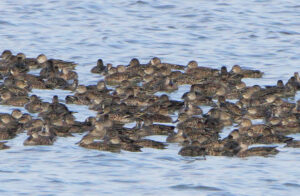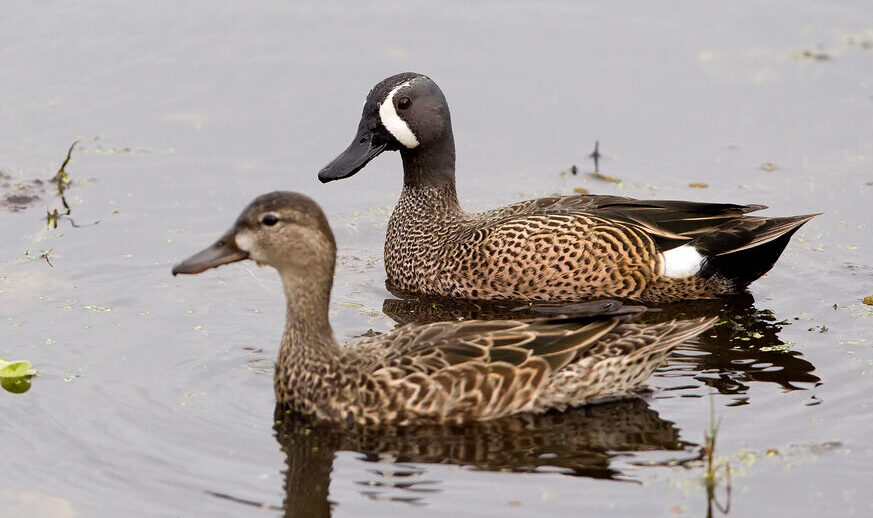Blue-winged Teal, Spatula discors
Bill Rowe
Birders often identify ducks the easy way, by looking for the males, which tend to show bold patterns and colors for much of the year; they are more obvious and distinctive than the females, clad in their mottled browns and grays. In the summer, however, a curious thing happens: the males molt into a duller, more female-like stage known as “eclipse” plumage and go through a period of near or complete flightlessness while they replace their wing feathers; they then regain their showier plumage over the course of the fall. This makes the ducks of late summer and early fall trickier to identify, as they all look more or less like females. Sometimes the saving grace is the wing pattern in flight, which is the one field mark that males and females share about equally in many species. This is all true not only of the locally-nesting Mallards and Wood Ducks but also of our earliest migrant, the little Blue-winged Teal that nests mostly to our north but becomes abundant in August. Some Green-winged Teal and Northern Pintails may join them, but the Blue-wings make up a good percentage of those “brown ducks” that populate our wetlands at this time of year; in fact, waterfowl hunters practice their sport with a special “teal season” for two weeks in September. (The big influx of other migrant ducks will come along later in the fall and early winter.) The Blue-winged Teal is also a good example of the subgroup called “dabbling ducks” or “surface-feeding ducks,” which make their living from aquatic plants and small animal life by tipping up and submerging only their heads, like Mallards, rather than actually diving and swimming under water. In keeping with the mirror-image patterns of many migrant birds, by which the earliest in fall become the latest in spring, the Blue-wing’s spring passage will peak in April and May, when the flow of many other ducks is becoming a trickle.
IDENTIFICATION: A Blue-winged Teal is small, appearing only half the size of a Mallard. In its most-of-the-year plumage, a male is easy to recognize by its dark blue-gray head and white crescent in front of the eye—but in the “eclipse” stage described above, it may have only a ghost of the crescent and otherwise look like the female. She is plain mottled brown, with a head pattern that shows an eyering broken by a thin dark line through the eye, and a small vague white spot at the base of the bill. In flight, however, both sexes have large, distinctive light blue patches on the shoulders, like nothing else except the Northern Shoveler, which is a larger bird with an outsize bill. The female Green-winged Teal, also very small, resembles the Blue-wing closely; to be certain, it may be best to wait for a view of the blue wing patch.
ST. LOUIS STATUS: Very common as a migrant, early in fall and late in spring compared to other ducks; found mostly in grassy, marshy areas with shallow water. In midsummer and in winter, it is quite rare.
Learn more and listen to the calls of Blue-winged Teals here.



Spring males and a female in flight
Spring group on water
Photo Credit: All Smith
Fall flock on water, both sexes;
note two males with crescents
Photo Credit: Al Smith




